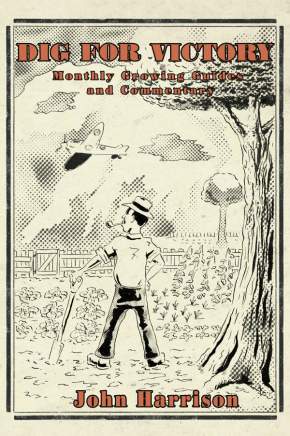Taking Stock
 June is the gardener’s sort of halfway house — a time for taking stock and finding out where we stand. So after patting ourselves on the back, let’s survey our plots, and assess our progress to date and the extent to which we may be a bit backward and consider what needs to be done if we are not to be caught napping this coming winter.
June is the gardener’s sort of halfway house — a time for taking stock and finding out where we stand. So after patting ourselves on the back, let’s survey our plots, and assess our progress to date and the extent to which we may be a bit backward and consider what needs to be done if we are not to be caught napping this coming winter.
In the first five issues of this Guide we emphasised the need for planning ahead, getting our needs in good time, getting things done in good time. But gardening on paper is too easy — and it’s not so easy to put paper advice into practice when the weather or lack of spare time just puts paid to the best laid plans issued by a government department or the gardening papers.
What we gardeners have to bear in mind always is that lean period from about February until the end of May. Anyone can grow vegetables in summer — and get gluts of them ; but it is those winter vegetables that need more thought and attention.
The Hungry Gap
Filling the period between the end of January to June, often called “The Hungry Gap” , with a variety of fresh green vegetables was critically important during the war. It’s hard for us to imagine nowadays when we can obtain any vegetable or fruit we want from around the world on any day of the year or dip into the freezer for frozen peas or whatever.
During the war few had fridges, let alone freezers and imports of green vegetables from abroad was unthinkable. Canned fruit and vegetables could be obtained but during the war the government looked to import canned foods with high protein and calorie values like corned beef, spam and canned meat.
If you have been following this monthly “Guide”—with such alterations as your family’s likes and dislikes have dictated—you should have little cause to worry; but if you have so far been happy-go-lucky in your choice of crops, you still have time in June to do something to put matters right.
The crops you want for next winter—assuming your family likes them all— are the green crops—Brussels sprouts, sprouting broccoli, kale, savoys ; the roots — parsnips, carrots, turnips and swedes; onions and leeks ; dried peas and beans ; potatoes.
It is too late to do anything about potatoes, onions and parsnips, if they are not already growing on your plot. While it is too late to sow seeds of Brussels sprouts, sprouting broccoli, kale and savoys, you can order some plants of the last three from your usual nursery or shop.


